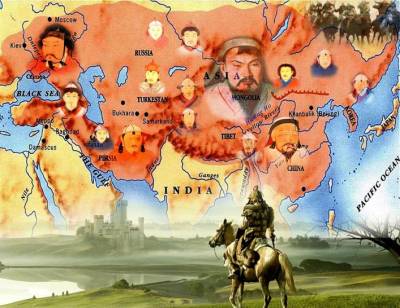7:45 PM Mongolian History | |
|
A substantial number of ethnicities have occupied Mongolia since ancient times. The greater part of these individuals were travelers who, now and again, shaped confederations that rose to noticeable quality. The principal of these, the Xiongnu, were united to shape a confederation by Modun Shanyu in 209 BC. In 1206, Chinggis Khan (otherwise called Genghis Khan) established the Mongol Empire, the biggest realm ever. The Mongol Empire's domain reached out from present-day Poland in the west to the Korean promontory in the east, from Siberia in the north to the Arab landmass and Vietnam in the south, covering give or take 33 million square kilometers. In 1227, after Chinggis Khan's passing, the Mongol Empire was subdivided into four kingdoms. In 1260, Chinggis Khan's grandson, Kublai Khan, climbed the throne of one of the four kingdoms that enveloped present-day Mongolia and China. In 1271, Kublai Khan formally settled the Yuan Dynasty. The Yuan Dynasty was the first outside tradition to control all of China until it was toppled by the Chinese Ming Dynasty in 1368. The Mongol court came back to its local area, then again, hundreds of years of inner clash, extension and withdrawal brought them fall into Manchu Qing administration. They vanquished Inner Mongolia in 1636. External Mongolia was submitted in 1691. For the following two hundred years Mongolia was administered by the Qing Dynasty until 1911. Mongolia pronounced its freedom in 1911 under the Bogd Khan, the otherworldly pioneer of Mongolia's Tibetan Buddhism. Be that as it may, the Chinese government still thought to be "External Mongolia" as a component of it and attacked the nation in 1919. In 1921, People's Revolution won in Mongolia with the assistance of the Russian Red Army and subsequently Mongolia turned into the second communist nation on the planet. After Bogd Khan's passing in 1924, the Mongolian People's Republic was announced and the first Constitution was embraced. Mongolia was under a Soviet-commanded Communist administration for just about 70 years, from 1921 to 1990. In the fall of 1989 and the spring of 1990, new streams of political thought started to rise in Mongolia, roused by the glasnost and perestroika in the Soviet Union and the breakdown of the Communist administrations in Eastern Europe. In March 1990, a law based transformation that began with appetite strikes to topple the Government prompted the serene revocation of socialism. Mongolia's denial of socialism prompted a multi-party framework, another constitution and a move to a business economy. In the course of recent decades, Mongolia has changed itself from a communist nation with an arranged economy into a lively multi-party vote based system with one of the world's quickest developing economies. | |
|
| |
| Total comments: 0 | |

